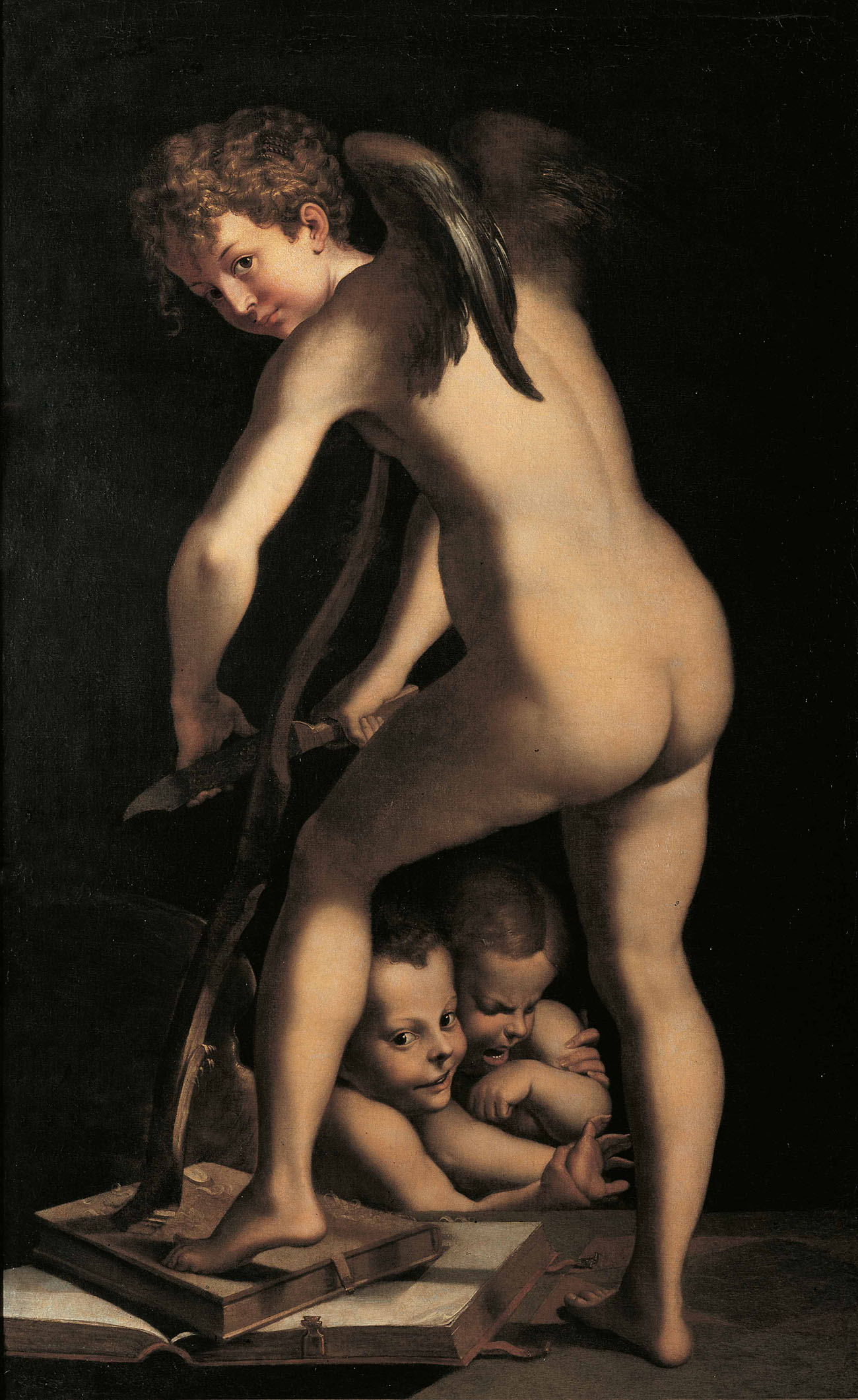
Cupid Making his Bow (after Parmigianino)
Joseph Heintz the Elder (1564-1609)
16th century, Oil on canvas
The only surviving work of Parmigianino (Francesco Mazzola, Parma 1503 - Casalmaggiore 1540) which deals with an episode from classical mythology is Cupid Making his Bow, now housed at the Kunsthistorisches Museum of Vienna. The tall, narrow painting represents a young Cupid, occupying the entirety of the scene and almost protruding from the frame, intent on carving the bow with which he shoots his enchanted arrows. He is not depicted as a child, but rather as a handsome and sensual young man, and Parmigianino was most certainly inspired by the ancient Hellenistic sculptures representing him with his bow. Appearing from the shadows, Cupid suddenly turns his gaze towards us, placing his left leg on two volumes that are used to support the bow, indicating how passion and desire overpower reason and knowledge. The two figures peering out from between Cupid’s legs can be identified as Sacred and Profane Love, or the perils of unrequited love that Cupid will soon instill with one of his arrows. These two putti appear to be bickering: the male returns the viewer’s gaze, almost involving him in his act, as he tightly grips the female and takes her wrist to direct her touch to Cupid, inciting her to submit herself to Love. Holy Roman Emperor Rudolph II of Habsburg (1552-1612) tried to retrieve Parmigianino’s original painting for more than twenty years, wanting to exhibit it together with some other artworks depicting mythological scenes which he already possessed. It was only at the beginning of the 17th century that an intermediary of the Emperor successfully acquired it, but the painting reached Prague in very poor condition, thus, the court artist Joseph Heintz the Elder (Basel 1564 – Prague 1609) was entrusted with its restoration. It seems that his attempts to restore the painting were unsuccessful, which led Heintz to paint various copies of the same size but in different media. Among the three paintings exhibited here, the middle one is one of Heintz’s copies, while the two others, on either side, are anonymous copies produced in a later period. Together with Emperor Rudolph II, Franco Maria Ricci is the only collector, over the centuries, to have successfully obtained more than one version of Cupid making his bow.

